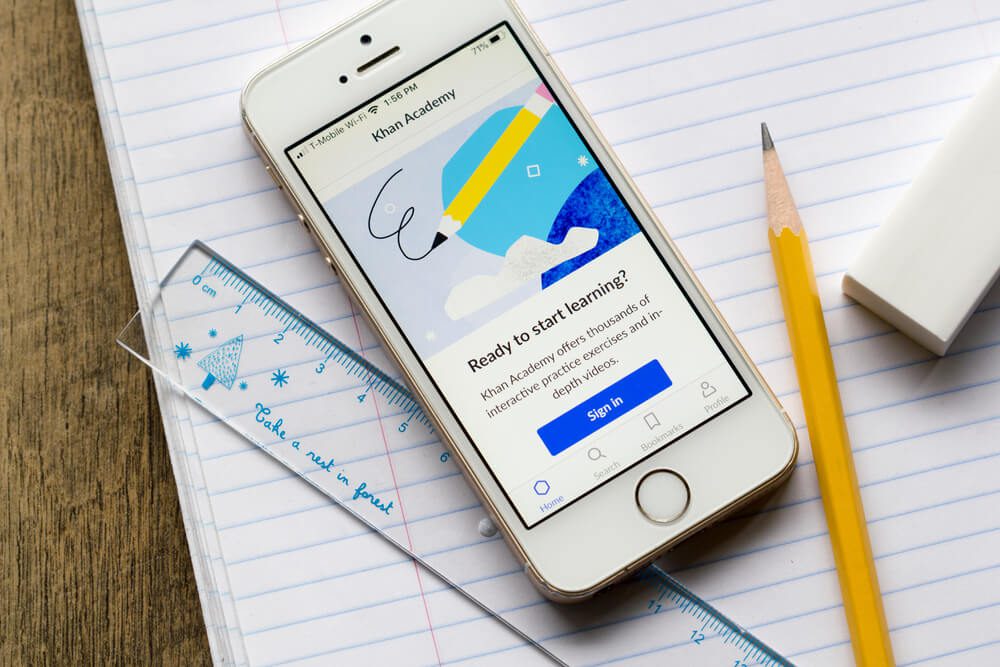
Pranjal Bora is the Head of Product Management at Digital Authority Partners. After working at Sam's Club, Sears and.
Get in touch with Pranjal
Head of Product ManagementPranjal Bora is the Head of Product Management at Digital Authority Partners. After working at Sam's Club, Sears and Ricoh Americas for the last decade, Pranjal brings a wealth of experience to our team in ecommerce, SaaS and manufacturing digital transformation. Expertise: Product Management, Mobile App Development, Web Development, Digital Transformation, Website Ada Compliance, Big Data, Artificial Intelligence.
Whole dissertations have been written about the rise of mobile. Few cultural shifts have been nearly as seismic as the ubiquity of mobile devices and the apps that make them both useful and distracting.
It started with “Snake,” a game that you could install on Texas Instruments graphing calculators so you could secretly tune out in AP Calculus class. In 1997, the Nokia 6110 came with “Snake” pre-installed —the very first mobile app, a concept that exploded in popularity and took the world by storm. Apple Computers visionary Steve Jobs conceptualized what became the App Store as early as 1983, laying the groundwork with the iTunes Store and the iPod. The iPhone debuted in 2007 with a trove of native apps, and the App Store debuted two years later with a catalog of 500 apps to choose from. The operating system that ran these apps, iOS, was quickly adapted to the iPad tablet and almost immediately gained a competitor in Android, which ran on smartphones and tablets, setting up a parallel version of the “Mac/Windows” blood feud in the mobile world. Apps quickly became sensations. According to Wired , the Angry Birds franchise amassed 2 billion downloads between its debut in 2009 and 2014, finding its way onto more than 50% of all mobile devices and spinning off merchandise, theme park rides, and motion pictures.
Apps had a huge economic impact, with Apple claiming that mobile apps had added 300,000 jobs to the economy. Facebook acquired the mobile app Instagram for a whopping $1 billion. From revolutionizing how businesses engage with customers, to creating new avenues for entrepreneurship, mobile apps have become indispensable drivers of economic growth. They facilitate seamless transactions, streamline processes, and foster innovation across sectors, from retail and finance to healthcare and entertainment. The app economy has generated millions of jobs globally, spanning development, design, marketing, and support services. The proliferation of mobile apps has empowered small businesses and start-ups, leveling the playing field and providing opportunities for market entry and expansion. As mobile usage continues to surge and technology evolves, the economic impact of mobile apps is poised to deepen, catalyzing further innovation and driving economic prosperity in the digital age.
Today, apps are firmly established as a cultural institution. Every company, organization, non-profit, or brand has tripped over itself to create a mobile simulacrum of their website, brick-and-mortar, or telephone experience. Universities and colleges have credibility as cultural institutions in their own right—to the point where a mobile app may seem superfluous to administrators. Do the Harvards and Oxfords of the world need to compete for attention with the likes of Snake and Angry Birds ? The short answer is “yes.” We will delve into why, as well as why the Harvards and Oxfords of the world, and their competitors, can’t settle for a low-rent app by a lesser developer. There’s more to higher education mobile app development than earning a spot on the home screen. Users have to find the app useful, motivating, and intrinsic to their success in college. This article will dig deep into mobile app development for higher education — why it is important, and how to do it right.

Universities rightly pride themselves on operating on the cutting edge. No matter how old or new the institution, the students and staff are always working hard to push the limits of human understanding into a brighter future. Like it or not, mobile apps will play a key role in that mission. There are many reasons why universities shouldn’t neglect their higher education mobile app development. For example, an incredible mobile app helps them:
An educational institution is nothing without students to teach, and one of the quirky features about students is that they tend to be younger than their professors. In fact, Gen Z, which has been trickling into universities, was born in 1997 — meaning they have never known a world without the internet, and they were a maximum of 10 years old when the iPhone debuted. Most of Gen Z has also never known a world without mobile apps. That bell can’t be unrung. Subsequent generations will consist only of children born into a mobile app world. A vast majority of Gen Z have a smartphone, with many having had one since they were 10 years old. This generation of students not only likes it when their favorite brands have a five-star mobile app—they expect it. Their chosen degree program is not exempt. Rather than trying to lasso young people into an old, “tried-and-true” way of doing business, savvy colleges and universities are discovering much more success by meeting students where they already are instead of where some dean wishes they were. This means investing in higher education mobile app development.
It is estimated that college students use apps on their smartphones (not including games) for several hours each day. It helps to understand how they use their mobile devices, so you can leverage behaviors they already have ingrained — for example, chatting with friends or checking notifications. The most successful colleges and universities exist in a constant state of dialog with their student bodies, disseminating their messages and receiving feedback from the student body in order to better serve them. Colleges and universities can use their mobile app as a direct communication conduit to every student. College apps allow students to ask questions, obtain services, and seek help. Administrations benefit from receiving data and survey answers from the student population.
Universities benefit from an engaged student body. It’s one of their biggest assets, right up there with the faculty and state-of-the-art facilities. Students who passively march through the motions not only suffer in their education, but they also don’t contribute to the culture of learning that universities labor to create. Higher education mobile app development can be a touchstone of the most important relationship that a college can foster — the relationship of trust and engagement between students and faculty. The app can be used to disseminate course material, track students’ progress, create “virtual office hours,” and even conduct whole courses online.
Many organizations — universities included — shy away from technology like mobile apps because it changes so fast. Why invest time and money into a product that will be a dinosaur with the next iPhone drop? Designing a world-class mobile app for universities can be costly in terms of resources and intellectual capital. Administrators understandably don’t want to spend that capital on an app destined to become obsolete. The good news is that the app industry knows this and has adapted. App developers don’t want to have to reinvent the wheel every year either. Today’s mobile app platforms are more flexible than ever, with the ability to produce an app that does not need a major new release every year. Instead, the app can expand and evolve as the university’s needs change, adapting to include more features, delete unneeded features, and unlock a school’s ability to scale its digital experience. In short, today higher education mobile app development is a good investment — with the right development strategy, you can count on them to go the distance with you.
A great institution of higher learning deserves a great mobile app—something students and staff will find useful, an app that will advance the school’s mission and drive revenue.
Here are some examples of university mobile apps that did accomplish this:

Ready to build the perfect mobile app for your college or university? It starts with a robust planning phase to set the stage for success. Considerations for the planning phase of mobile app development for higher education include:
Every project has stakeholders, or people with an interest in the success of the project. For a university, this could include administrators and board members, but it could also include representatives from the faculty and even the student body. After all, they will be the ones using the apps the most.
Once a team of stakeholders has been identified and assembled, the team must make sure that they understand the objective of the higher education mobile app development project. Once the stakeholders agree on the importance of the mobile app, they will be less likely to impede the project with conflicting interests.
The stakeholders must also brainstorm and agree on the app’s goals and core functions. This is another way to head off disagreement and prevent stakeholders from defending their turf to the detriment of the overall project.
Brainstorm a list of desired features (digital ID card, campus orientation, course supplements, marketplace, whatever comes to mind). Then, rank them in order of importance. Some functions may not serve the core goals of the app and should be discarded.
Every project also needs a target timeline and a budget. Developing an award-worthy mobile app usually takes between three and six months. The budget can be measured in the thousands, tens of thousands, or even hundreds of thousands of dollars, depending on the functions and complexity. Make sure to align your team of stakeholders around a timeline and budget that makes sense to everyone.
Most universities and colleges won’t develop their apps in-house and instead depend on a third-party vendor to lead the development team. Reach out to reputable vendors in the higher-education mobile app space with a Request For Proposal (RFP). Review the proposals, schedule interviews, and decide which proposal makes the most sense.
DAP is an industry leader in mobile app development for higher education – cost-efficient and functionality savvy.
Website and mobile app developers often talk about “UX design.” UX is short for user experience and refers to a design ethic that takes into account, first and foremost, the user. For a college or university app, the users will almost certainly be the students, but also the faculty and members of the administration.
Believe it or not, app design with the user in mind is a fairly new concept. It refers to designing the app not just for the functions, but for the user’s ability to access those functions and actually make use of them.
This might sound obvious to you, but in the early days of websites and apps, developers didn’t necessarily know what a user would find intuitive. There was no design language or generic UX that a digital experience could be built around.
Today, years of studies and data (some of it conducted by university think tanks) have been compiled about how users interact with apps, giving a bare-bones idea of good UX that a developer can build a unique digital experience from. UX design in higher education mobile app development should address:
Navigation refers to how a user finds their way around the app and locates the functions they want to use. UX design has established several rules for mobile app navigation that account for the minimal screen space they have to work with.
Examples include strategically hidden text, as well as using one word or an icon whenever possible to convey an idea. Some icons, like the “hamburger” collapsing menu, “text-bubble” chat icon, or the magnifying glass to indicate a search field are well-known among app users. Including these familiar signposts can be critical in helping them find their way around.
Taxonomy is an important consideration in the arrangement of app functions and refers to the hierarchy of “levels” within your app. In short, how many times does a user have to touch the screen before they find a function?
Good UX design calls for a taxonomy of two to three layers. Four or more is pushing it: A user may give up before they find a function that they have to dig four layers deep to access.
Once the stakeholders have a handle on navigation and taxonomy, they can start designing a user journey —a defined series of steps that the app will walk the user through, hopefully with the help of intuitive navigation.
Developers usually map out user journeys with an “if/then” style of flow chart. Good UX design calls for simplicity and intuitive design . If a step of the user journey has more than a handful of choices, the user may become overwhelmed. It helps to only offer one to three choices for a user to select at each stage in the journey.
Loading speed is a function of mobile UX that often gets overlooked—unless it becomes a problem, and then it becomes impossible to ignore. One of the pitfalls of simply trying to clone your website experience into an app is that web functions often load slowly on a mobile app. Your institution’s website must be reconfigured for mobile to ensure it retains functionality and usability.
Users tend to abandon user experiences that take too long to load. We’re talking about two, maybe three seconds you have to work with before frustration sets in. Professional mobile app developers go to great lengths to ensure that an app loads quickly. To do any less would be to sacrifice UX for the sake of functionality.
Many organizations, including universities, know that they need a mobile app. Kids these days and their apps, right? But they risk failure if they skip the step of asking why they are designing a mobile app. What are the core functions and purposes of the app? How will it add to the experience of being a student, administrator, or faculty member?
Will the app serve as a digital ID card? A means of communication between the faculty and the student body? A hub of student activity, from tracking health to event attendance? Will it be used for orientation, or to reproduce the classroom experience online? Will it depend on user-generated content to build a kind of “virtual campus” ecosystem?
All of these things are possible in mobile app development for higher education— if you are clear about what you are trying to achieve with the app.

Once the planning and design phases are done, it’s time to start the development and testing process. This is an exciting phase, where your university’s mobile app actually starts to take shape. Key considerations in mobile app development for higher education include:
Two development methodologies dominate the app-building world:
A majority of app developers prefer Agile Methodology. If you consider an app developer who prefers Waterfall, make sure you understand their reasoning.
Digital security is everyone’s concern, and students place a significant deal of trust in their universities. Colleges owe it to them to take mobile app security very seriously. Considerations include:
Once a working version of the mobile app is built, it’s time to put it into the hands of target users. User acceptance testing (UAT) must be done before the launch of the app in order to identify problems with the UX and go public with the best version of the app possible.
The traditional UAT model involves restating the objective of the app, identifying target users, creating a test case scenario, running the test case with the app in the hands of the target users, recording data, and comparing that data against the objective.
Congratulations on the launch of your app! The next step is to construct a plan for faculty training, tech support, and student adoption.
Don’t be concerned if the app experiences hiccups along the way to widespread adoption. An app is never really “done”—it is subject to constant feedback and improvement. With the right development partner, your app will cruise through its first roll-out and only get better with time.
A mobile app is an essential part of the experience that a college or university offers its students, faculty, and staff. All it takes is planning, design, and execution with the help of the right partner—someone experienced with mobile app development for higher education.
Looking for clarity on what roles you want the app to fulfill and how to get it done? Reach out to DAP : Our team of app wizards specializes in higher education mobile app development.
You Might Also Like: